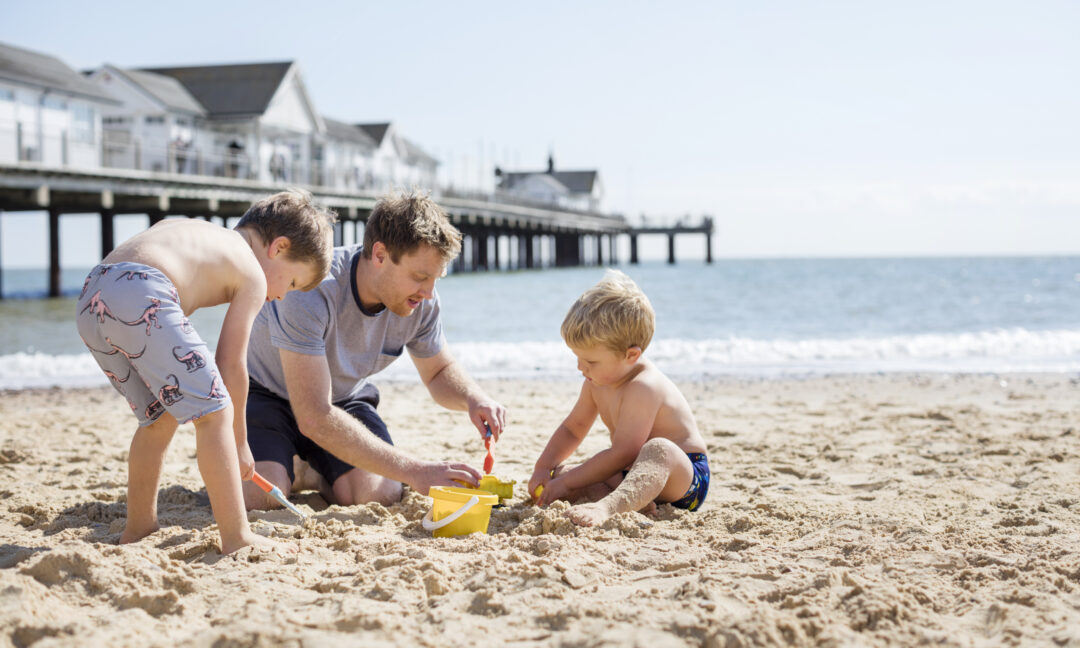This is general advice about opening a children’s savings account in the child’s name. For specific details about opening a Suffolk Building Society children’s savings account, please visit our children’s savings page.
When helping a child to develop good saving habits, choosing the right savings account is important. Introducing them to saving early in life can instil positive financial habits. This can teach children the importance of setting savings goals, as well as growing funds for their future. Plus, parents, relatives and friends will know all the Christmas five and birthday ten pound notes will be squirrelled away for future use.
You can make the most of this by helping the children in your life pay into an account in their own name. Then, they’ll get used to saving regularly and can watch their balance grow too.
So, whether you’re a parent, grandparent, or legal guardian, let’s look at children’s savings accounts in more detail.
How do children’s savings accounts work?
Children’s savings accounts work the same as adult savings accounts: money is deposited, builds interest and can be accessed according to the terms of the account. This usually depends on the child’s age and any specific terms from the account provider.
Depending on the different type of children’s savings account, a parent or guardian may need to be present when it’s opened.
Different types of account
There are different types of children’s savings accounts, but here are the main ones you might come across:
Instant access account
This is where a child can deposit money as often as they like. They can even choose to save their weekly or monthly pocket money and get into the habit of saving little and often. It’s great for building up their savings over time.
This type of account has no withdrawal restrictions, so money can be taken out whenever needed. This is useful if money is required quicky.
These accounts can help develop a child’s financial responsibility, as they learn to manage their money – ensuring they save, but without limiting those all-important toy purchases.
Depending on the child’s age, there may be restrictions about how much they can access in one transaction, or whether parental or guardian consent is required.
Fixed-term account
Here, money is locked in the account for a set amount of time, (e.g. for a year or two). In return, you might get a higher interest rate. If the child takes their money out of this type of account before the maturity date there may be a penalty. This means they might get back less than they put in. However, these accounts are great for young people with a specific savings goal in mind, who might otherwise be tempted to dip into their funds.
Junior ISA (cash)
This is a special type of savings account where the money can be saved tax free. This type of account is ideal for long-term savings as they can’t take their money out until they are 18. The government sets the annual Junior ISA allowance.
Trust
A bare trust is where the money saved will always only belong to the child. Such an account can be opened by parents, grandparents or legal guardians, and they will be responsible for operating the account as trustee(s) until the child reaches 18.
Key considerations
When choosing a savings account for a child, there are a few things to consider before they invest their money.
Interest rate
Look for an account with a good interest rate. Children’s savings accounts often offer higher interest rates compared to standard adult accounts.
Fees
Check if there are any fees for opening or using the account.
Accessibility
You might prefer that the child has a branch nearby and can physically pay in their money. Or, you might feel more comfortable with online savings or an app. It can be fun to combine a branch visit with a shopping trip, helping the child to understand money.
Terms and conditions
Make sure you understand the rules of the account. These usually include how often money needs to be deposited, whether there is a minimum or maximum amount, and how easy it is (or not) to access your money.
Tax
Children have the same personal allowance as adults. But given they are generally not earning, it is rare for them to exceed any tax thresholds. There are rules in place about how much interest a child can earn, so double-check these if the child is earning or saving large amounts. You can find out more about this on the government website: www.gov.uk/savings-for-children
How safe are the funds in a children’s savings account?
The Financial Services Compensation Scheme (FSCS) protects money in any savings account up to £85,000. This includes children’s savings accounts.
What do I need to open a children’s savings account?
The person opening the account will need the usual contact details and proof of identity. Alongside these, you’ll need a birth certificate as proof of identity for the child. If you’re opening a children’s ISA, you may also need their National Insurance Number.
What happens when the child turns 16, 18 or 21?
Once a child reaches adulthood, the account may change. The bank or building society will likely transfer funds to a different savings product. There will also be new terms and conditions applied. The account holder (the young person) can then decide if they are happy with this account or would prefer to move their money elsewhere. Most banks or building societies will give the account holder prior warning of this account change.
Choosing a children’s savings account doesn’t have to be complicated. By considering factors like interest rates, fees, and access, the perfect account can be found to help them save for the future. And remember, starting early and saving regularly can make a big difference over time!
If you require more information about opening a children’s savings account, please get in touch. We’ll be happy to help you further.



















